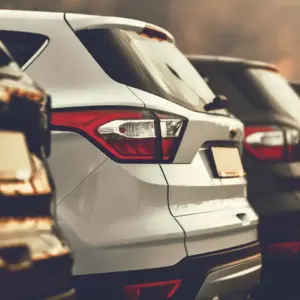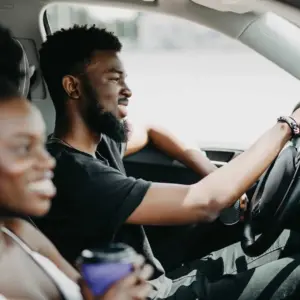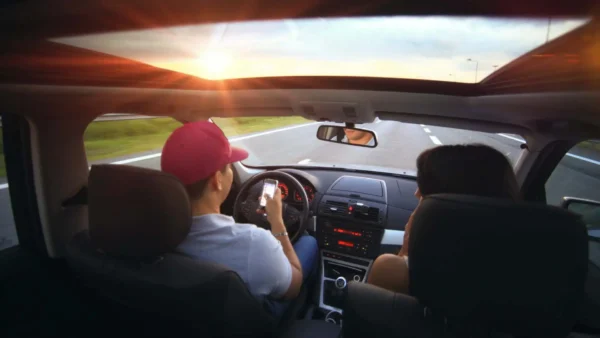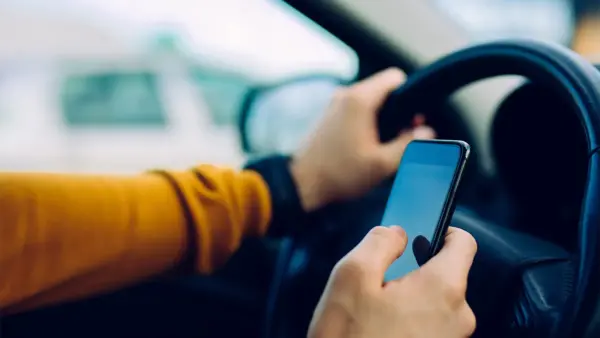There are times when we have no choice but to entrust our fate to others. We pray the attending surgeon is having a good day. We hope the pilot squeezed in a nap before our red-eye flight. But it doesn’t take a triple-bypass or turbulence at 30,000 feet to be vitally dependent on the competence of people around us—it happens every time we get into a car.
Unlike our prosaic contribution to major surgeries and white-knuckle flights, road travel is a two-way street. A safe trip relies on our own performance, as well as the actions of faceless figures behind the wheels of all the other vehicles within striking distance.
Alert drivers not only minimize the likelihood of causing accidents, they often avert them by counteracting the reckless, impatient, or inattentive maneuvers of others.
Separated by a solid line and a few feet of compromise, personal cars and 10-tonne commercial transports speed past each from opposite directions. Each intersection is a new test, as aggressive—or oblivious—motorists push the limits with traffic signals and invoke dubious right-of-way privileges.
A second or two of inattention can be the difference between getting home safely and not getting home at all.
If this all sounds kind of dire, it should:
- The Ontario Ministry of Transportation reports that fatalities attributed to distracted driving accidents have doubled since the year 2000. Someone is injured in one every half hour. A driver using a phone is four times more likely to be in a crash than a driver focusing on the road.
- The Ontario Provincial Police (OPP) reports, through mid-August of this year, there were twice as many inattention-related road deaths as there were from impaired driving.1
- The Royal Canadian Mounted Police (RCMP) warn that a driver’s likelihood of crashing increases by 23 times if they are texting and 2.8 times if they are dialing a phone.2
According to Webster, to distract is to draw or direct one’s attention to a different object, or in different directions, at the same time. We experience distraction every day: lively chatter on the bus breaks our focus from the Stephen King novel; deep in thought, we absently reach for the fridge to put the Corn Flakes box away; or we knock over our beverage in a wayward swipe at it—with eyes fixed to the big play on the flat screen.
Some consequences of distraction are harmless, but the stakes are raised when it comes to driving. Reacting to sudden and unexpected hazards on the road requires acute presence of mind and continuous assessment in rapidly changing conditions. There is no room for multitasking.
There are three general categories of distracted driving:3
- Visual – eyes engaged on something other than the road
- Manual – adjusting, holding, or reaching for something
- Cognitive – thoughts or attention on something other than driving
Here are ten common examples of distraction in driving, the applicable categories, and some tips to avoid being a casualty of inattention:
1) Texting (visual-manual-cognitive)
The meteoric rise in mobile device usage, and texting as a preferred mode of communication—most notably with the younger set—make this a leading contributor to the increase in distracted driving incidents. All categories of distraction are engaged in this toxic trifecta of preoccupation.
- Turn off the mobile, or silence notifications
- Keep it out of sight and reach (glove box / trunk)
- Set a bounce-back message to senders (settings / apps available)
- Ensure contacts know you don’t respond while driving
- Have a passenger deal with text messages
- Safely pull over to a rest stop if a message is necessary
2) Eating, drinking, smoking (visual-manual)
For many, a road trip without java is like a theater flick without popcorn. But there is distractive potential beyond a spill and burn hazard. Eyes leave the road in search of the cup and a hand leaves the wheel as we reach for it, or hold it. Smoking or fast food adds risk as we fumble with packaging with a single hand, and with some burgers and sandwiches, struggle for a condiment-salvaging grip.
- Plan to eat before departure or at a rest stops on route
- Avoid continuous carry of a drink cup and master eyes-free retrieval
- Enlist the assistance of the passenger-side occupant
- Leave things dropped or spilled for a safe pull-over opportunity
3) Daydreaming, stressed, emotional (cognitive)
A mind consumed in deep thought is a mind unavailable for tasks of high concentration. This is a significant factor in distracted driving accidents, with one American insurance company suggesting it accounts for up to 62% of fatal car crashes.
- Avoid driving at times of high stress or emotion
- If there is an option for other transportation, or an alternative driver, use it
- Avoid intense conversations with passengers while driving
- Commit to making the drive the priority, save the rest until the car is parked
Get an auto insurance quote in minutes.
4) Passenger Interference (Visual-Manual-Cognitive)
Like the surgeon’s medical team and the pilot’s flight crew, passengers of an automobile play an important role in enabling the driver to safely operate the craft and land smoothly at the destination.
- Don’t be the distraction. Keep chatter and music volume at reasonable levels
- The shotgun seat comes with a responsibility to assist with reaching or adjusting needs (audio, climate, GPS, maps)
- Be a backup set of eyes rather than a subject of the driver’s attention
5) Talking by Phone or with Passengers (Visual-Manual-Cognitive)
This is a distraction with degrees of intensity. Moderate background music is not as distractive as processing conversational dialogue. Light conversation is less cerebrally seductive than concentrating on an audio book.
Cognitive diversion is proportional to the intensity or complexity of the stimulus. To the extent a mind is occupied in deep conversation—by phone or with passengers—it is less available to process activity and conditions related to safely operating a vehicle. Preoccupied drivers drift along a route with only vague awareness of their surroundings.
- Save phone conversations for when the car is parked
- If a call in necessary, use voice-dial and hands-free technologies
- Avoid heavy conversations by phone or with passengers
- In conversations with passengers, resist the impulse for eye contact
6) Adjusting the Controls / Reaching for Things (Visual-Manual)
While automobile designers are bringing technologies such as voice-command features to keep our hands on the wheel, and talking navigation systems to keep our eyes on the road, the cure can turn cause when hands reach and eyes wander, unnecessarily.
- Take the time to learn proper usage of safe driving technologies available with newer vehicle models
- Set and adjust GPS destinations, seats, mirrors, audio and climate controls before starting out, make use of radio presets—or safely pull over to a rest stop as necessary
- Allow the shotgun passenger to make adjustments required in transit
7) Grooming (Visual-Manual)
If you’re part of the daily commute wave, you’ve probably witnessed a frenzied counterpart touching up make-up, fixing hair, pulling an electric razor across a stubbled cheek, or shedding a layer of clothing. Sometimes it’s jammed into the downtime of a stoplight, occasionally it’s in full flight.
- Allow enough time for cosmetic maintenance before getting in the car
- Warm up the vehicle and/or dress for the running vehicle climate
- Avail of rest stop facilities in urgent cases of esthetic disarray
8) Taking in the View (Visual)
Road travel often tempts us with some beautiful views, but drivers rarely have the luxury of partaking. Multi-directional attentiveness in heavy traffic is a continuous process of direct and mirror-assisted monitoring of activity in front, behind and beside the vehicle. A quiet road may seem relatively innocuous, but the prospect of running into vehicle debris, errant cargo, roadkill, nature’s scatterings, or bolting animals, precludes safe scenery gazing.
- Keep eyes to the driving landscape—not internal or external temptations
- Avoid rubber-necking when coming across a road accident
- Rely on voice GPS technology or passengers rather than a visual search for destination address
9) Tending to Children / Infants / Pets (Visual-Manual-Cognitive)
When it comes to kids or pets, things happen quickly. As tempting as it may be to whirl around and separate combative siblings, or settle a howling pet, it is much safer to wait for a roadside stop opportunity. Particularly trying is an infant fussing in a rear car-seat position.
- Take time to ensure infants and children are properly dressed, clean-diapered, and securely fastened in for the trip before pulling out of the driveway
- Prepare pets for local travel or longer trips by feeding / vacuating them, as required, before leaving
- Though it’s instinctive to want to tend to a fussing child immediately, it is in the collective interest to navigate safely off the roadway, first.
10) The Influence of Drugs, Alcohol, Fatigue (Cognitive)
Anything that dulls or alters the senses is a serious threat to safe and effective concentration on the operation of a vehicle. Jurisdictional laws and penalties reflect the seriousness of the matter and the tips here should be a surprise to no one.
- Don’t drink and drive
- Don’t drive under the influence of drugs or medicines
- Recognize signs of fatigue and make arrangements to change drivers or safely pull off to a rest stop
And here’s where the rubber meets the road: with the notable exception of anesthetic and altitude, there is not really much difference between what we expect from our surgeons and pilots, and what we should be practicing as automobile drivers.
Sources
- OPP – http://www.opp.ca/index.php?lng=en&id=115&entryid=57c4839a8f94aca87623db0f
- RCMP – http://www.grc.gc.ca/en/gazette/distracted-driving
- DMV.ORG – https://www.dmv.org/distracted-driving/three-types-of-distractions.php
Looking for car insurance?
Speak with a Mitch Insurance broker today to get a quote on Ontario auto insurance. Learn more >
Call now
1-800-731-2228







